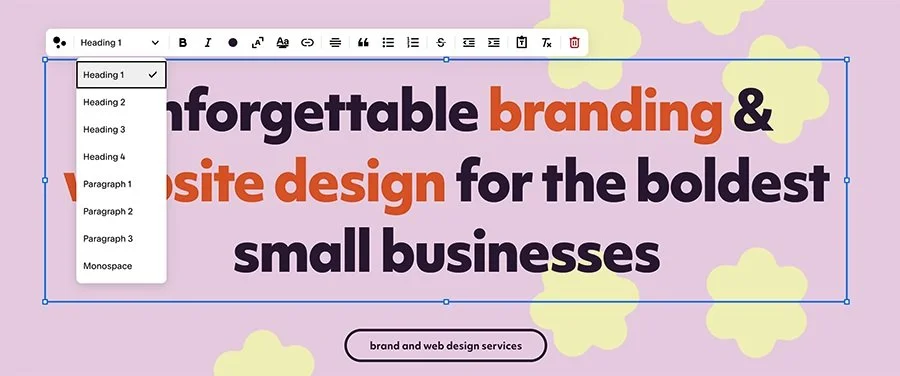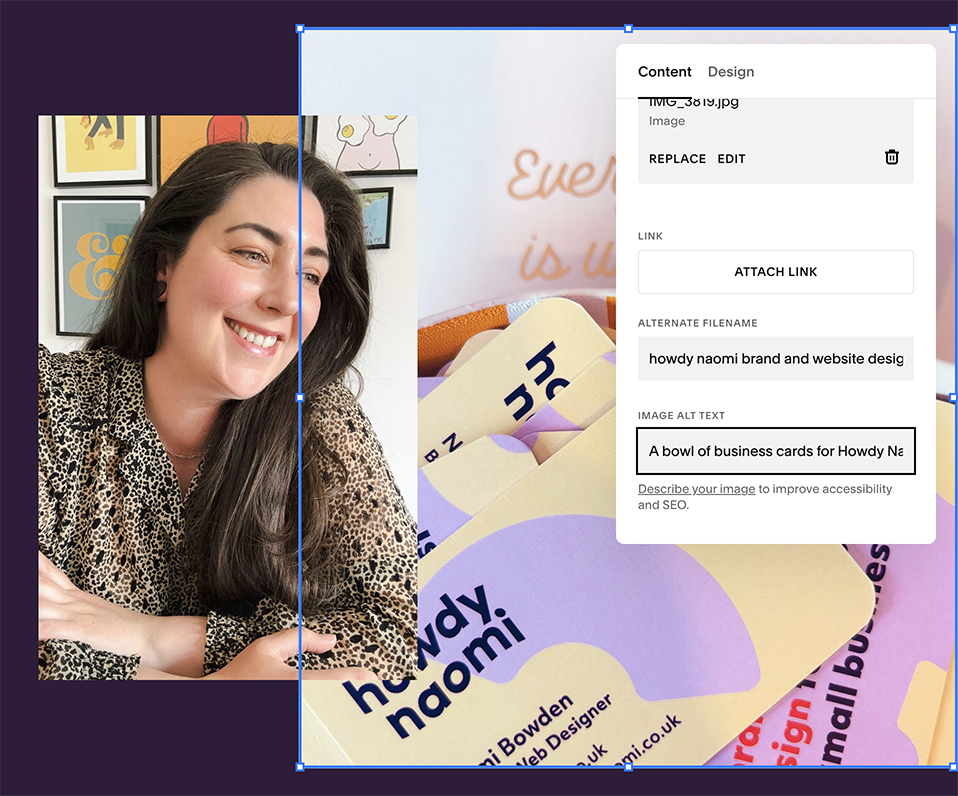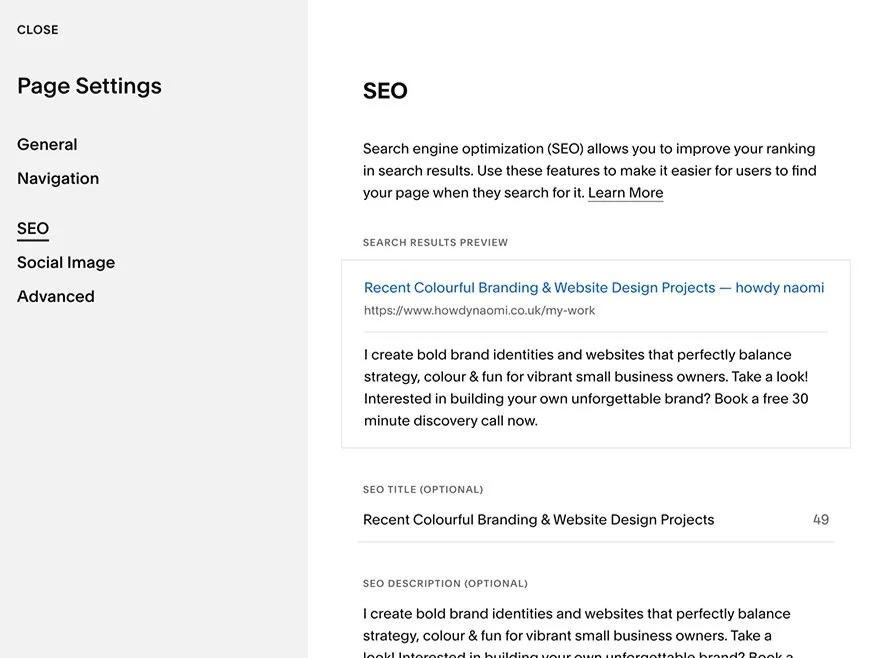Top 10 Squarespace SEO Tips to Boost Your Website’s Visibility
What is SEO and Why Does It Matter for Your Squarespace Website?
SEO (Search Engine Optimisation) is the practice of optimising your website so that it ranks higher on search engines like Google. The higher your site ranks, the more organic traffic you get, meaning more potential clients find and buy from your business. If you want to be discovered by your dream audience, SEO is a non-negotiable.
Squarespace is a popular website-building platform known for its gorgeous design templates and user-friendly interface - even for non-techy business owners. But is Squarespace good for SEO? Absolutely! While some people automatically assume that platforms like WordPress have the upper hand, Squarespace also provides powerful built-in SEO tools. You just need to know how to use them effectively.
Here are ten essential Squarespace SEO tips that will help you climb the search rankings and get found by the right people.
1. Make the Most of Your Heading 1 Tag on Every Page
An example of a strong, keyword-rich heading 1
Headings play a crucial role in SEO, and the Heading 1 (H1) tag is the most important of all. Search engines scan your website to understand what each page is about, and the H1 of each page is a major signal for them.
Each page of your Squarespace website should have only one H1, and it should be rich in relevant, naturally occuring keywords. Instead of a vague title like "Welcome to My Website," use something specific like "Creative Branding & Web Design for Female Entrepreneurs." Consider including what services you offer, where you’re based, and who you work with. Think about the words and phrases your ideal clients would type into Google and incorporate them naturally into your H1. Do this for every page of your website, and remember to stick to just one H1 per page.
2. Upload Images at the Right Size to Improve SEO
Large image files can drastically slow down your website, and a slow-loading site is bad for SEO. Google prioritises websites that load quickly because it improves the user experience.
Squarespace allows you to upload high-quality images, but that doesn’t mean you should go overboard when it comes to file sizes. Always compress images to 72dpi and resize them as close to their display size as possible before uploading them. You can use free tools like TinyPNG or ImageOptim to reduce file sizes without compromising quality. Faster load times mean happier visitors and a better chance of ranking higher on search engines.
3. Make Use of image Alt-Text for SEO and Accessibility
An example of a good alt text description with natural keywords
Alt-text is the hidden description of an image that screen readers use to help visually impaired users understand what’s on the page. Beyond improving accessibility, alt-text is also an SEO win because search engines use it to understand image content.
When adding images to your Squarespace site, always write descriptive alt-text that naturally includes keywords. Instead of “photo of a woman,” say, “Creative branding strategist working on a new website design for a female entrepreneur.” This small but mighty detail can make a big difference in your Squarespace SEO strategy.
4. Write regular blogs to Rank on search engines for Niche Keywords
One of the best ways to boost Squarespace SEO is through blogging. Regular blog posts allow you to target niche keywords and phrases that potential customers are searching for, helping you rank for a variety of relevant search terms.
For example, you have a much better chance of ranking for a specific blog post title like "5 Website Design Mistakes That Could Be Hurting Your Business" than a generic page labeled "Web Design." Use blog posts to answer common questions, share expert insights, and optimise each post with keyword-rich headings, alt-text, and internal links.
5. Check Your Colour Contrast for Accessibility and SEO
A well-designed website isn’t just about aesthetics—it’s about making sure people can actually read your content. Low-contrast text can make your site hard to navigate, frustrating users and increasing your bounce rate, which negatively impacts SEO.
Use Squarespace’s built-in design settings or free contrast checkers to ensure your text is easy to read against its background. Making your site more accessible not only benefits users but also sends positive signals to search engines, helping your Squarespace website rank higher.
6. Pitch for Guest Opportunities to Build domain Authority
Backlinks (links from other reputable websites back to yours) are a key ranking factor for SEO. The more high-quality websites link back to your Squarespace site, the more trustworthy your website becomes and the more authority Google assigns to you.
An easy way to build your backlinks is by pitching guest blogs, podcast appearances, and collaborations with other industry professionals. A feature on a reputable website with a link back to your site not only drives traffic but also strengthens your SEO game. Backlinks are essentially digital word-of-mouth marketing that tells Google, "Hey, this website is well worth a visit!"
7. Optimise for Mobile with Squarespace’s built in mobile Editor
The Squarespace mobile editor in action, super easy to use
More than half of all web traffic comes from mobile devices, so ensuring your Squarespace website looks great and functions smoothly on mobile is essential for SEO.
Use Squarespace’s built-in mobile editor to check your site’s responsiveness. Make sure text is readable without zooming in, buttons are easy to click, and images load quickly. A mobile-friendly website keeps users engaged and signals to Google that your site provides a great user experience, leading to higher rankings.
8. Limit Video and Art Backgrounds for Faster Load Times
Squarespace offers beautiful creative design features like video and animated backgrounds, but overusing them can slow down your site hurting both user experience and SEO.
Instead of relying heavily on video or art backgrounds, use them sparingly (they have more impact this way) and consider static images where possible. If you do use videos, make sure they are properly compressed and optimised for fast loading - a good designer should be able to help you with this. A sleek, fast site is always better for SEO than a sluggish one, no matter how stunning the visuals.
9. Write Keyword-Rich Page Titles and Descriptions
Meta titles and descriptions in Squarespace, they call them SEO titles and descriptions
Every page on your website should have a unique, keyword-rich title and meta description - knows as SEO titles and descriptions in Squarespace. These elements appear in search engine results and help users decide whether to click on your site.
Avoid generic titles like "Home" or "About." Instead, be specific: "Bold & Strategic Branding for Female Entrepreneurs | Howdy Naomi." Your meta description should be engaging and informative, incorporating relevant keywords while enticing users to click through.
10. Use Squarespace and Google Analytics to Track SEO Performance
SEO isn’t a one-and-done task—it requires ongoing adjustments based on data and performance. Squarespace provides built-in analytics, but integrating Google Analytics gives you even deeper insights into where your traffic is coming from and what’s working.
Regularly review your analytics to see which keywords you’re ranking for, which pages get the most traffic, and where visitors drop off. With this data, you can refine your SEO strategy, update content, and continue improving your Squarespace website’s performance over time.
it’s true, Your Squarespace Website Can Be SEO Friendly and High-Performing
SEO is all about providing high-quality, accessible content that search engines can easily understand. By implementing these simple Squarespace SEO tips - optimising headings, compressing images, using alt-text, blogging, improving accessibility, building backlinks, and tracking performance - you’ll set your website up for success.
With a little strategic effort, your Squarespace website can climb the search rankings, attract your ideal audience, and grow your business. So start optimising today, and watch your website visibility soar!





